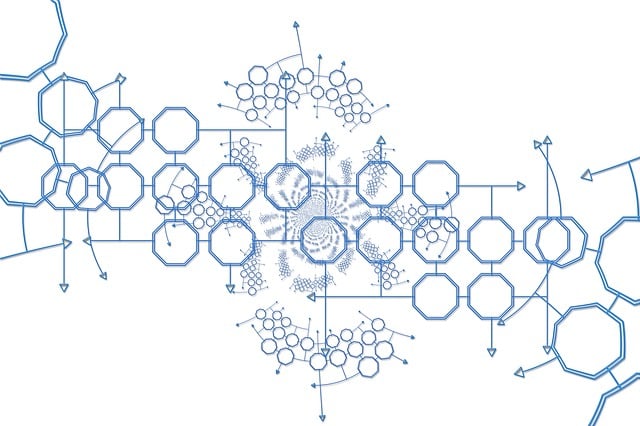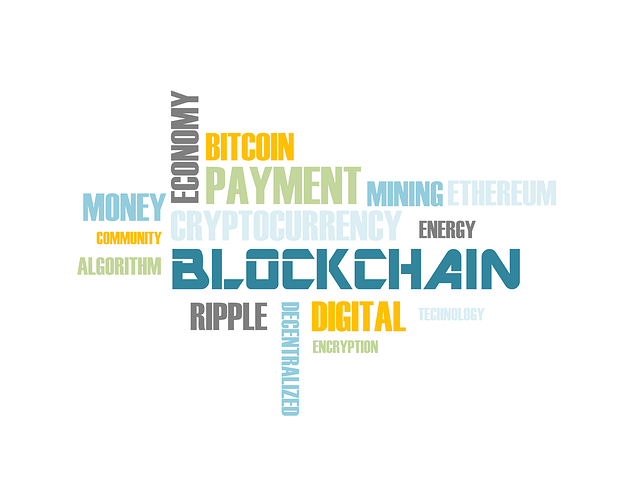Table of Contents
Definition of Blockchain
Blockchain is a groundbreaking technology that allows digital information to be distributed and securely stored across a network of computers. It functions as a decentralized and transparent ledger system, where transactions are recorded in a series of blocks that are linked together through cryptography. This creates a chain of blocks, hence the name blockchain. The cornerstone of blockchain lies in its ability to ensure data integrity and security through its decentralized nature, making it resistant to tampering and fraud.
At its core, blockchain operates through a peer-to-peer network where each participant, known as a node, plays a crucial role in validating and verifying transactions. This distributed consensus mechanism eliminates the need for a central authority or intermediary to oversee transactions, promoting trust and transparency in the system. Through the use of smart contracts, blockchain can automate various processes and execute agreements without the need for third-party involvement, revolutionizing the way transactions are conducted across various industries.
Origins of Blockchain
In unraveling the enigmatic roots of blockchain technology, one inevitably finds oneself delving into the cryptic origins shrouded in obscurity. It is believed that the conceptual seed of blockchain was sown by a person or group under the pseudonym Satoshi Nakamoto in a whitepaper titled “Bitcoin: A Peer-to-Peer Electronic Cash System” in 2008. This seminal work laid the groundwork for the groundbreaking integration of cryptographic principles and decentralized networks, giving rise to the revolutionary paradigm shift that is blockchain technology.
The mystique surrounding the genesis of blockchain further deepens as one peels back the layers of history to uncover the intricate tapestry of technological innovation that led to its inception. Rooted in the realms of cryptography and distributed systems, blockchain rose from the ashes of the global financial crisis of 2008 as a beacon of hope for decentralized resilience and transparency. The amalgamation of disparate threads of cryptographic algorithms, peer-to-peer networks, and consensus mechanisms wove together the intricate fabric of blockchain, setting the stage for its transformative journey across industries and domains.
Key Components of Blockchain

Blockchain technology consists of three key components: blocks, cryptographic hash functions, and distributed network. Blocks serve as the containers for data that are stored in a blockchain. Each block contains a list of transactions, a timestamp, and a unique identifier known as a cryptographic hash. These blocks are linked together in a chronological chain, creating a secure and immutable record of transactions.
Cryptographic hash functions play a crucial role in ensuring the security and integrity of a blockchain. These functions generate a unique hash for each block based on its content. Any change in the block’s data would result in a completely different hash, making it easy to detect any tampering attempts. Additionally, distributed network refers to the decentralized nature of blockchain technology. Instead of relying on a central authority, blockchain networks are maintained by a network of nodes that work together to validate and record transactions securely.
How Does Blockchain Work?
Blockchain works through a decentralized system where transactions are recorded and confirmed across a network of computers, known as nodes. When a new transaction is initiated, it is grouped together with other transactions into a block. This block is then verified by the nodes in the network through a consensus mechanism, ensuring that all transactions are valid and adding them to the existing chain of blocks, hence the name “blockchain.” This process creates a secure and transparent ledger of transactions that cannot be altered or tampered with, providing trust in the system.
Each block in the blockchain contains a cryptographic hash of the previous block, forming a chronological chain of blocks that are linked together. This ensures the integrity of the data and makes it extremely difficult to alter past transactions without affecting all subsequent blocks. Additionally, the decentralized nature of the blockchain means that no single entity has control over the entire network, making it resistant to hacks or fraudulent activities. This transparency and security offered by blockchain technology have led to its widespread adoption across various industries for different applications.
• Blockchain operates through a decentralized network of computers known as nodes
• Transactions are grouped into blocks and verified by nodes through a consensus mechanism
• Verified transactions are added to the existing chain of blocks, creating a secure ledger
• Each block contains a cryptographic hash of the previous block, forming a chronological chain
• The decentralized nature of blockchain makes it resistant to hacks and frauds
Types of Blockchain
There are mainly three types of blockchains: public, private, and consortium blockchains. Public blockchains are open to anyone who wants to participate in the network. They are decentralized and permissionless, allowing for transparent and secure transactions without the need for trust among participants. Popular public blockchains include Bitcoin and Ethereum.
On the other hand, private blockchains are restricted to authorized participants only. They are centralized and permissioned, providing more control over who can read, write, and validate transactions on the network. Private blockchains are often used by businesses and organizations looking to leverage blockchain technology for internal processes and data management. Finally, consortium blockchains are a hybrid of public and private blockchains. They are semi-decentralized and permissioned, with multiple organizations sharing the responsibility of maintaining the network. Consortium blockchains are suitable for industries where collaboration and trust among a group of known entities are essential for conducting transactions and sharing sensitive information.
Applications of Blockchain Technology
In the realm of healthcare, blockchain technology is revolutionizing the way patient data is stored and managed. With its immutable and secure nature, blockchain ensures that sensitive information remains confidential and tamper-proof. By utilizing blockchain, healthcare providers can streamline processes such as patient record management, interoperability between different medical facilities, and even drug traceability. This technology has the potential to enhance data accuracy, improve patient outcomes, and ultimately transform the healthcare industry as we know it.
The supply chain industry is another sector benefiting greatly from the implementation of blockchain technology. With its transparent and traceable nature, blockchain allows for real-time monitoring of goods as they move through the supply chain. This innovation helps to eliminate fraud, reduce counterfeiting, and enhance overall transparency in the supply chain process. By leveraging blockchain, companies can ensure the authenticity and quality of their products, build consumer trust, and optimize operational efficiency in a rapidly evolving market landscape.
Advantages of Blockchain
Blockchain technology offers several advantages that have the potential to revolutionize various industries. One key benefit is transparency, as all transactions recorded on the blockchain are visible to all parties involved. This increases trust and accountability within the ecosystem, as every transaction is traceable and cannot be altered without consensus from the network. This transparency also reduces the risk of fraud and improves the overall integrity of the system.
Another advantage of blockchain is decentralization, which eliminates the need for intermediaries in transactions. By removing intermediaries such as banks or brokers, blockchain enables peer-to-peer interactions, reducing costs and speeding up processes. Decentralization also makes the system more resilient to attacks or failures, as there is no single point of failure. This distributed nature of blockchain enhances security and ensures that data is secure and accessible only to those authorized to view it.
Challenges of Blockchain Technology
While blockchain technology offers numerous benefits, it is not without its challenges. One of the primary issues faced by blockchain technology is scalability. As more transactions are added to a blockchain, the size of the database grows exponentially, leading to potential bottlenecks in processing speeds. This can hinder the ability of blockchain networks to handle a high volume of transactions efficiently, especially when compared to traditional centralized systems.
Another significant challenge in blockchain technology is the issue of regulation and compliance. Due to the decentralized nature of blockchain networks, it can be difficult for governments and regulatory bodies to monitor and enforce laws related to data privacy, security, and financial transactions. This lack of clear regulatory frameworks can create uncertainty for businesses looking to adopt blockchain technology, as they may be unsure of how to navigate legal requirements in different jurisdictions.
Blockchain in Finance
Blockchain technology has significantly transformed the financial sector by providing enhanced security, transparency, and efficiency in transactions. One of the key advantages of using blockchain in finance is the decentralization it offers. By eliminating the need for intermediaries, such as banks or payment processors, blockchain enables direct peer-to-peer transactions, reducing costs and processing times. Furthermore, the immutable nature of blockchain ensures that all transaction data is securely recorded and cannot be altered, enhancing trust among stakeholders.
In addition to streamlining traditional financial processes, blockchain in finance has opened up new opportunities for innovative financial products and services. Smart contracts, automated self-executing contracts with predefined rules, allow for the creation of complex financial instruments that operate without the need for intermediaries. This not only reduces the risk of fraud but also enables the seamless execution of transactions, making financial operations more efficient and cost-effective. Overall, the integration of blockchain technology in finance is revolutionizing the industry and paving the way for a more secure and transparent financial ecosystem.
Blockchain in Supply Chain Management
Supply chain management faces numerous challenges such as lack of transparency, inefficiencies, and issues with traceability. Blockchain technology offers a solution to these problems by providing a decentralized and immutable ledger that enables secure and transparent transactions. By using blockchain in supply chain management, companies can track the movement of goods, verify authenticity, and ensure compliance at every stage of the supply chain. This not only improves efficiency but also builds trust among stakeholders, leading to better decision-making and reduced risks.
Furthermore, blockchain technology can revolutionize supply chain management by streamlining processes, reducing costs, and enhancing the overall efficiency of the supply chain. Through the use of smart contracts, automated payments, and real-time tracking, blockchain can optimize inventory management, reduce the risk of fraud, and minimize delays. Additionally, the decentralized nature of blockchain eliminates the need for intermediaries, speeding up transactions and improving the overall transparency of the supply chain. As more industries adopt blockchain technology in supply chain management, we can expect to see significant improvements in operational processes and a shift towards more sustainable and ethical practices.
Blockchain in Healthcare
Blockchain technology has significantly transformed the healthcare industry by enhancing data security, transparency, and interoperability. Through the use of encrypted blocks of information that are linked together in a decentralized network, blockchain ensures that patient data remains secure and immutable. The ability to track and trace the origin and access of health records in real-time has revolutionized how sensitive information is managed and shared among healthcare providers, patients, and other relevant parties. By eliminating intermediaries and creating a tamper-proof system, blockchain has the potential to streamline data management processes and improve the overall quality of patient care.
Moreover, blockchain in healthcare has paved the way for innovative solutions such as patient-driven health records, where individuals have greater control over their medical information. By decentralizing data storage and enabling patients to grant access to specific healthcare providers as needed, blockchain promotes patient autonomy and fosters a more collaborative approach to healthcare delivery. This shift towards patient-centric care not only empowers individuals to make informed decisions about their health but also encourages greater engagement and accountability in managing their well-being. As blockchain continues to gain traction in the healthcare sector, the potential for enhanced security, efficiency, and patient outcomes is vast.
Blockchain in Government
Governments around the world are exploring the potential of blockchain technology to streamline operations and enhance transparency. By employing blockchain in government services, authorities can ensure the secure and efficient management of data related to citizen information, voting records, and public transactions. The immutable nature of blockchain can safeguard sensitive data from tampering and unauthorized access, thus bolstering trust in government processes.
Moreover, blockchain in government has the capacity to revolutionize public service delivery by facilitating smart contracts for automated and transparent interactions. Through the use of decentralized ledgers, governments can minimize bureaucratic hurdles and optimize resource allocation, leading to cost savings and improved service quality. By leveraging blockchain technology, governments have the opportunity to foster greater accountability and integrity in their operations, paving the way for more efficient and trustworthy governance practices.
Future of Blockchain Technology
As the blockchain technology continues to evolve, experts anticipate a myriad of advancements in various industries. Innovations in scalability and interoperability are expected to address the current limitations of blockchain networks. Additionally, the integration of artificial intelligence and Internet of Things (IoT) with blockchain is foreseen to revolutionize the way data is stored and shared securely.
Moreover, the proliferation of decentralized finance (DeFi) applications is poised to reshape traditional financial systems, offering more efficient and inclusive services to users globally. The advent of quantum-resistant blockchains also signals a bold step towards fortifying the security of digital assets against future threats. These developments will pave the way for enhanced transparency and trust in transactions, driving the widespread adoption of blockchain technology across diverse sectors.


